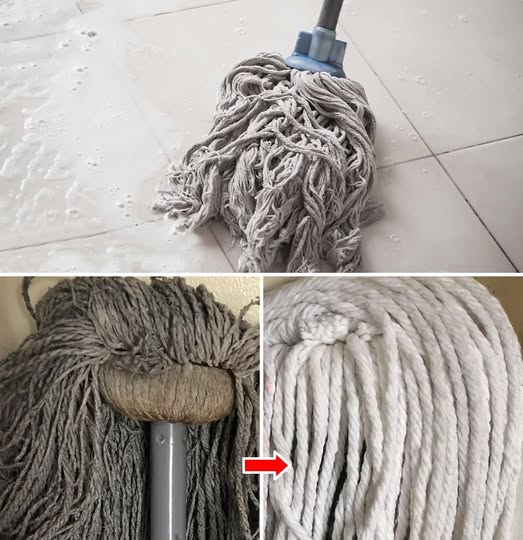ADVERTISEMENT
Scrub and Rinse:
For heavily soiled mops, use a brush to scrub the fibers gently. After scrubbing, rinse thoroughly under running water to remove any soap or dirt residues.
Dry Properly:
Wring out excess water and hang the mop head in a well-ventilated area to air dry completely. Avoid leaving it in damp spaces, as this can lead to mold or mildew growth.
Serving and Storage Tips:
Store your mop upright or in a hanging position to maintain its shape and prevent dirt buildup.
Avoid using a damp mop head immediately after cleaning; ensure it’s fully dry before the next use to avoid spreading bacteria.
Variations:
Natural Option: Substitute baking soda and vinegar with lemon juice for a citrusy, antibacterial cleaning boost.
Quick Refresh: If the mop head is not heavily soiled, a simple soak in hot water with a teaspoon of dish soap can suffice.
FAQ:
Q: How often should I clean my mop?
A: Ideally, after every 2–3 uses, especially if you’re cleaning high-traffic areas or tackling tough messes.
Q: Can I put my mop head in the washing machine?
A: Many microfiber or detachable mop heads are machine washable. Always check the manufacturer’s instructions before doing so.
Q: What if my mop still smells after cleaning?
A: Persistent odors may indicate lingering bacteria. Soak the mop in a solution of water and bleach (1:10 ratio) for 5–10 minutes, then rinse thoroughly.
Q: How do I prevent my mop from getting dirty quickly?
A: Sweep or vacuum floors before mopping to reduce dirt transfer. Use separate mops for different areas (e.g., kitchen and bathroom) to avoid cross-contamination.
With these steps and tips, your mop will not only look like new but also help keep your home sparkling clean. Happy mopping!
ADVERTISEMENT
